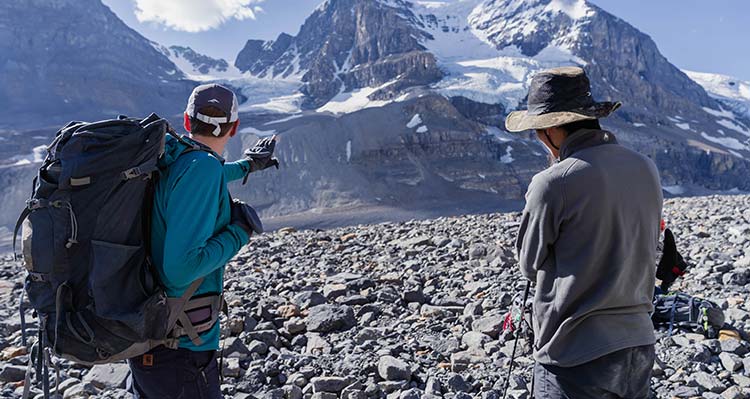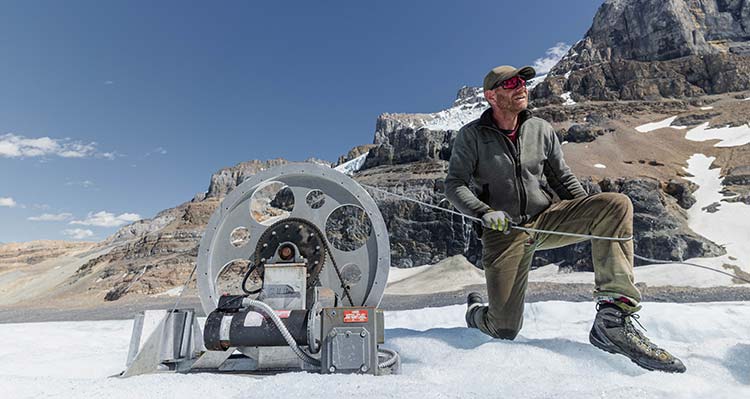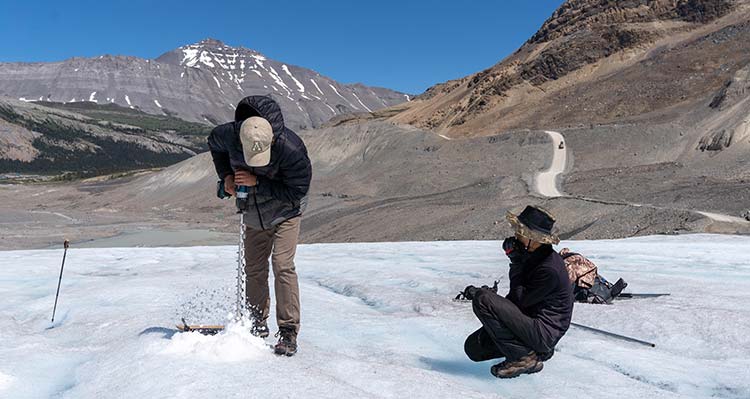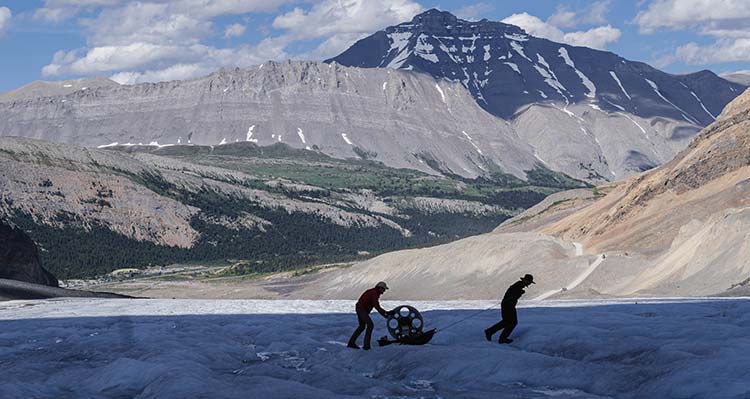The Columbia Icefield Adventure offers guests from around the world an unprecedented opportunity to travel to and stand atop the ever-evolving Athabasca Glacier.
Scientists who study glaciers, also known as glaciologists, visit the Athabasca Glacier for the same reasons: accessibility and connection to the past.
"It feels like hallowed ground to me,” said William Armstrong, who introduces himself as Billy. “When I first came to Athabasca Glacier it very much felt like a pilgrimage to a holy place. As a glaciologist you have these places that you read about all the time and Athabasca Glacier was one of those.”
Armstrong, an assistant professor in Geological and Environmental Sciences at Appalachian State University in North Carolina, U.S.A, is leading a research project on the Athabasca Glacier, in partnership with the University of Alaska Fairbanks.
Armstrong and his team are looking at the impact our warming climate is having on the Athabasca Glacier. Specifically, how fast it’s sliding at its base.
While glaciers are always moving downhill, the speed at the surface and middle of the glacier is different than the speed at the bottom. Basal sliding is a significant way to measure the impact of climate change on glaciers because it is sensitive to meltwater. The more water underneath the glacier, the faster it will slide, and the faster it will melt.

“If a glacier slows down, that’s good because that causes it to thicken and that helps it stabilize in the face of a warming climate,” Armstrong said. “But if it speeds up, it causes the glacier to kind of stretch out. That will exacerbate its thinning and ice loss in a warming climate.”
Armstrong described the annual cycle of glacial melting and retreating as depositing and withdrawing money from a bank account. In the winter, the glacier grows due to snowfall. In the summer, it melts due to the heat. Worldwide human-caused climate warming means a lower deposit in the winter, and a larger withdrawal in the summer.
According to Armstrong, three main attributes make the Athabasca Glacier a prime location for research:
Ease of access: In other places around the world, glaciers require helicopter or other airborne access. In the Athabasca Valley, the team drives to the glacier and hikes in only one kilometre.
A scientifically “simple” shape: The glacier’s relatively straight and uniform valley means the width of the glacier is consistent, making it easier to track.
Access to historical data: Researchers have visited the Athabasca Glacier since the 1960s and added to its historical database.

For Pursuit’s Columbia Icefield Adventure team, Armstrong’s research offers a chance to both know more and share more about the beloved glacier.
"This partnership allows us to support a research team that can provide us with firsthand knowledge about the glacier — past, present and future” said Brent Malley, general manager at the Columbia Icefield Adventure.
“As ambassadors of the national parks and the glacier, we can then include that data into our interpretive tours and our web content to share with the world.”
Historical data and more recent measurements show the glacier has retreated 600 metres and thinned an average of 60 metres since the 1960s. In some places, the glacier has thinned over 100 metres.

Armstrong’s project began in 2019 with an ice radar and the installation of GPS markers. This data, as well as satellite imagery, has indicated the glacier is moving between five and 10 centimetres per day. However, the team will be returning this summer to gather the data from the instruments they installed in 2022, which will give them a better understanding of the speed of the glacier.
While melt from the Athabasca Glacier will likely have minimal impact on sea levels, its potential for impact closer to home is substantial.
The Athabasca Glacier feeds the Athabasca River, which travels 1,500 kilometres across Alberta and drains into Lake Athabasca. The lake flows into the Slave River, joins the McKenzie River and eventually flows to the Arctic Ocean. According to Athabasca University, the river basin supported a population of 154,097 people in 2001, approximately five per cent of Alberta’s population.
The disappearance of glaciers would also be a great loss to visitors and the surrounding communities. Through partnerships with experts like Armstrong, Malley and his team are building a better understanding of the place they operate, allowing them to minimize their own impact while continuing to offer spectacular glacier-top experiences.

“The Athabasca Glacier and Columbia Icefield isn’t just a place of work for us — it’s a local and global relationship between all living things that depend on its existence,” said Malley. “Having researchers like Billy and his team provide valuable data and knowledge with us is an absolute privilege.”
Experience the Athabasca Glacier today with a Columbia Icefield Adventure. Looking to learn more about Pursuit’s environmental commitment at the Icefield? Read about other ongoing eco initiatives here.
We are building a team of passionate people determined to make a difference in the places we love. Every effort counts. Meet more of them here and discover how Promise to Place is the real deal.
Learn More